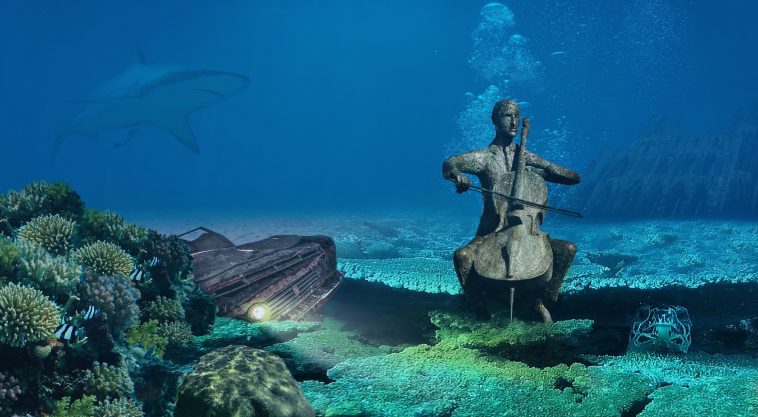When 71% of the earth is enveloped by the blue abyss, it shouldn’t come as a surprise that so much of our rich and forgotten history could be buried deep under the vast Moana. The ocean has always been a mysterious unknown that archaeologists have been tirelessly exploring over the years. And through these excavations, countless lost ancient ruins as well as inexplicable artefacts and mystical creatures have been discovered. Here in this article, we will be highlighting those ancient cities that have been kept hidden by the depths of the ocean.
The Kingdom of Cleopatra, Egypt
The Kingdom of Cleopatra was almost forgotten when it was discovered in 1988 near the shores of Alexandria, Egypt. After being lost for almost 1,600 years, Marine archaeologists excavated the entire submerged city with its statues, artefacts, statues of the goddess Isis and Sphinx, the colossal stone head of Caesarion (the son of Cleopatra and her lover Julius Caesar) and almost all its relics intact.
Other than the belongings of the city some shipwrecks are also discovered. To date, over 20,000 objects have been discovered from the depth of the sea.
The Lost City of Lord Krishna, India
Initially considered to be a myth, Dwarka, the city of Lord Krishna, was discovered off the northwestern coast of India by a group of Indian scientists. Though the search for its submerged part began in the 1930s, the first archaeological excavation did not take place before 1963.
After the discovery of countless ancient artefacts and the sunken remains of the ancient Dwarka, it was assumed that it used to be a very lively port city. Lucky for us that the scientists believed the city to be real, otherwise we would have never seen this amazing city with our own eyes.
Remains of Gondwana
Back in 2011, an article was published in National Geographic, According to which some huge pieces of Gondwana were discovered hidden under the vast ocean. Gondwana was an ancient continent comprising Australia, India and Antarctica. These pieces were formed when the landmasses of the countries separated into their current locations.
Numerous unique features like the presence of gneiss, granite and sandstone were discovered by scientists while conducting a deep-sea exploration to find out what exactly happened. Still, there is so much more left to be uncovered about the remains of Gondwana.
Baiae, Italy
Baiae was once the Las Vegas of the ancient Romans, packed with soothing hot springs and extravagant buildings. The city was located on top of the Campi Flegrei, a supervolcano close to Naples. Ironically the same volcanic activity which resulted in creating the hot springs was also the reason for the ancient cities’ destruction as bradyseism caused the ground to slowly sink and bring much of the city underwater.
Julius Caesar as well as Nero had luxury holiday villas here, and the emperor Hadrian actually died in the city in AD138. In 2002, the sunken parts of the city were designated as a Marine Protected Area by the local authorities, limiting people’s access to Baiae.
Pavlopetri, Greece
Now lastly let’s talk about one of the oldest ancient underwater cities in history, Pavlopetri. Found in 1967, near the southern coast of Lakonia, Greece, after over 5,000 years since it was submerged due to a flood. From that day on it has been considered a valuable archaeological site as it offered deep insights into the society of Mycenaean.
“It is a unique discovery in the sense that we have found on the seabed an almost complete city, with streets, buildings, gardens, tombs and what looks like a religious complex,” said Jon Henderson of the University of Nottingham in 2009.





